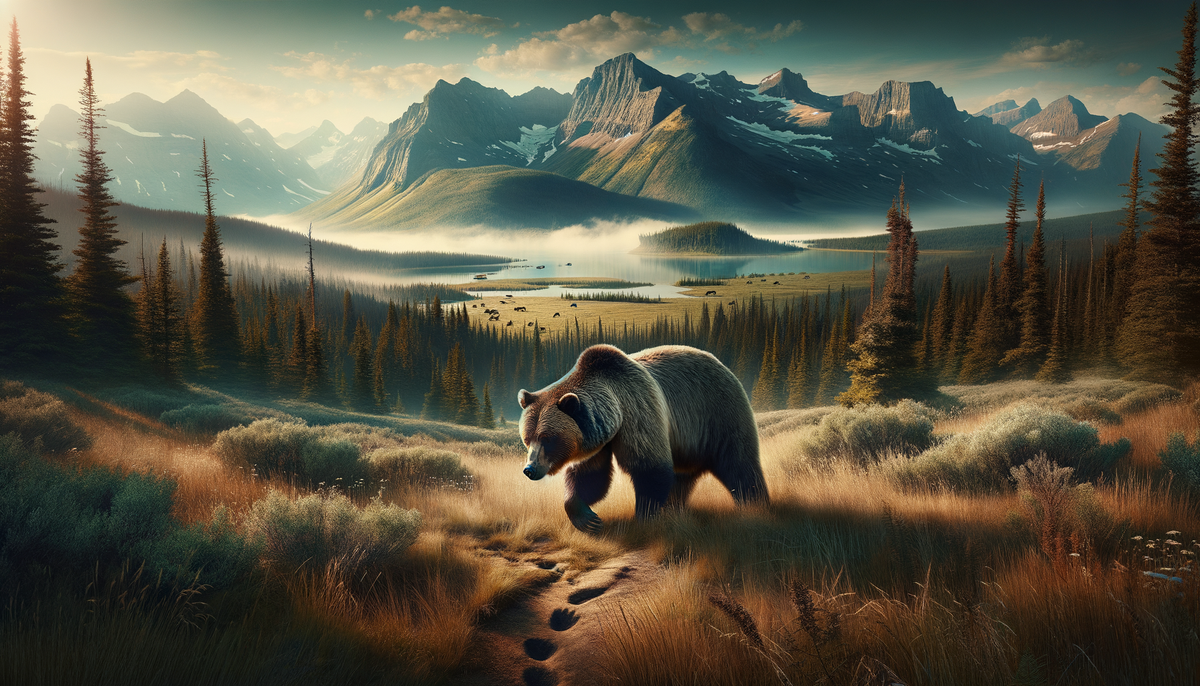Grizzlies: A Majestic and Formidable Force of Nature
Explore the fascinating world of grizzly bears - a symbol of power and wilderness. Learn about their ecology, significance, and conservation efforts.

Grizzlies: A Majestic and Formidable Force of Nature
In the realm of wildlife, few creatures capture the imagination as powerfully as the grizzly bear. Known scientifically as Ursus arctos horribilis, grizzlies stand as a symbol of the untamed wilderness, wielding both awe and respect from those who venture into their domain.
Understanding the Grizzly Bear
The grizzly bear is a subspecies of the brown bear, notable for its distinctive appearance. The name 'grizzly' comes from the bear's fur which is often silver-tipped, giving it a grizzled complexion. These magnificent creatures are apex predators and play a crucial role in their ecosystems, particularly in North America.
Grizzly bears are distinguished by their sheer size and power. Adult males typically weigh between 400 to 600 pounds, though some formidable individuals can reach an astonishing 1,500 pounds. Females, while smaller, still boast significant strength, weighing between 250 to 350 pounds. Their physical features include humped shoulders, an elevated forehead which gives them a concave profile, and long straight claws suited for digging and dominance over their territories.
Behavioral and Ecological Significance
Grizzlies are omnivorous creatures with diverse dietary needs. Their diet spans from berries and plant roots to small mammals and large prey such as elk and moose. Interestingly, their dietary habits have a substantial ecological impact, assisting in seed dispersal and maintaining a balance within their food web. During peak feeding seasons, a grizzly can consume up to 90 pounds of food per day to prepare for hibernation.
The ecosystem role of grizzlies extends beyond their diet. As apex predators, they have a top-tier impact on the ecosystems they inhabit. Their interactions range from competing with other predators like wolves to influencing the population dynamics of their prey.
Physical Attributes and Abilities
Despite their enormous size, grizzlies are remarkably agile. They can sprint at speeds up to 35 miles per hour, a testament to their powerful physique supported by strong muscle groups concentrated in areas like their shoulders. This speed and strength are critical for hunting and territory defense.
Grizzlies are not adept climbers, but their ground agility is impressive, as is their sense of smell which compensates for their relatively poor eyesight. These abilities, combined with their territorial nature, make them formidable creatures within their domains.
Human Interactions and Conservation
Human interactions with grizzlies can be fraught with danger, primarily due to misunderstandings and habitat encroachments. These bears are known for being particularly aggressive when threatened or when females are protecting their cubs.
Conservation efforts for grizzlies are vital, considering historical habitat loss and human-induced challenges they face. Various levels of protections, including federal measures, have been instituted to safeguard these iconic animals.
Conclusion and Call to Action
Grizzlies, with their powerful presence and ecological importance, are a poignant reminder of the wilderness's majesty and the delicate balance within it. For professionals and enthusiasts in the field of wildlife ecology and conservation, understanding these majestic creatures goes beyond admiration—it's an imperative for maintaining biodiversity and environmental health.
To truly appreciate the role of grizzly bears in our ecosystems, we must continue to support and advance conservation efforts. These actions not only protect the bears but also uphold the intricate ecosystems they help sustain. We invite readers to delve deeper into the challenges and triumphs of grizzly conservation and explore the strategies that can lead to harmonious coexistence with these magnificent creatures.
For further insights and engagement, join our community of wildlife professionals and enthusiasts committed to studying and protecting the natural world. Together, we can make a difference in the conservation of grizzlies and their habitats.




